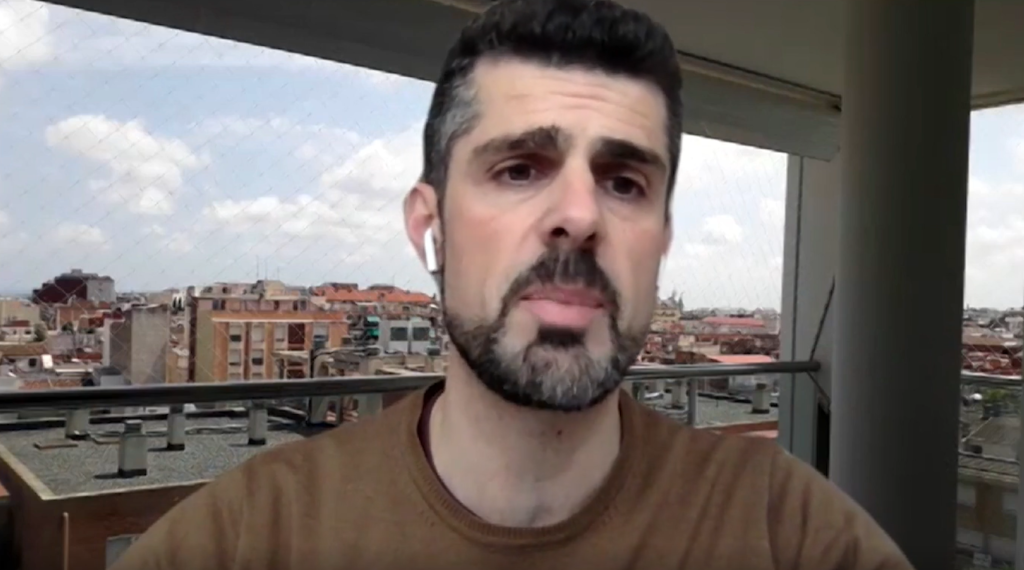According to the latest report from the Spanish Society of Medical Oncology Colorectal cancer will be the most diagnosed tumor in 2022 with 43,370 new estimated cases and the second leading cause of death from cancer, with more than 15,000 deaths per year2.
A common denominator in patients with this type of cancer is pain.3particularly in the advanced stage of the disease, with a estimated prevalence of more than 70 percent3. In addition, about 55 percent of patients with abdominal pain have episodes of Breakthrough Cancer Pain (DIO)1.
For this reason they met Julen Fernandez Plana, Assistant Physician of the Oncology Service of the Hospital Universitari MútuaTerrassa and Elena Maria Brozos VazquezAssistant Physician of the Medical Oncology Service of the Santiago de Compostela University Hospital Complex (CHUS), to talk about breakthrough cancer pain, its proper diagnosis and comprehensive treatment in this growing pathology.
The cancer pain will accompany the patient throughout his illnessfrom the diagnosis itself, to the appearance of metastases and its treatment, explains Fernández Plana.
–
Regarding this, Elena María Brozos Vázquez indicates the importance of treating pain as a “leading symptom” for the diagnostic. I remember a patient that the onset and diagnosis of his disease was due to colic-type pain that he suffered when going to have a bowel movement. “The pain presented itself daily in a physiological activity and that led him to consult the primary care doctor who very correctly knew how to guide the diagnosis towards a colonoscopy for a diagnosis of colon cancer.”
In addition, the specialist emphasizes the importance of all physicians being trained to ask about pain and especially DIOabout characteristics and type and know how to make decisions for the performance of a good diagnosis.
patients
More and more patients are surviving colorectal cancer, this is what Fernández Plana points out. The cure rate is higher as the diagnosis is earlier4.
The reality is that breakthrough cancer pain in this type of cancer contributes to patients presenting physical and emotional problems1,5. In addition, others such as intestinal dysfunction and fatigue are added to this symptom.5,6.
“The more survivors of colorectal cancer we have, the more patients with morbidities associated with the treatments and the disease itself we will have and it is essential to approach it in an appropriate way”, indicates the oncologist.
For her part, the CHUS specialist explains that sometimes the treatments prescribed for patients are highly toxic and this causes them even more pain. Therefore, she points out that from oncology they must be attentive to give all possible support and that the patient does not have a poor quality of life and a distortion of his life.
Likewise, it tells the case of a patient with whom they had to make a risk-benefit balance and try to adjust the treatment so as not to cause so much toxicity in the form of that neuropathic pain that she felt due to the metastases. “We managed to provide him with the treatment a benefit with all the support we could, by managing the other pain in the best possible way. In this way the patient achieved a better quality of life.”
Proper diagnosis of DIO
Experts agree that getting better at shared decision making It would allow patients to better participate in clinical and therapeutic decision-making.

–
Specifically, the specialist of the Hospital Universitari MútuaTerrassa, points out that the communication is of “extreme importance and requires continuous improvement.” And it is that with this they will give the patient the opportunity to express everything that happens around breakthrough cancer pain, its characteristics and thus be able to guide the most appropriate treatment.
“Only from one active listening, will allow us to identify the DIO properly and therefore address it appropriately.” Also, it highlights the training as a necessary tool and continued available to deal adequately with this type of pain.
In this sense, the CHUS oncologist points out that experience has given her the idea that The basis of any relationship is communication.. “Every time I try to spend more time with the patient to communicate the goals we have with the treatment or how the therapies work.”
In addition, it highlights that communication and explanations to patients always bring a lot of satisfaction because it calms the DIO and they understand why they take that medication.
comprehensive treatment
In relation to the approach to breakthrough cancer pain by the health professional, Julen Fernández Plana is clear: he must be multidisciplinary and multidimensional both of the DIO and of the basal pain.
“It is from this multidisciplinary approach where the best results will be achieved, it will allow to cover the needs at all levels that the patient needs, coordinate all the necessary resources and improve their quality of life, as well as an adequate symptomatic control of this type of pain or other symptoms.”
Elena María Brozos Vázquez agrees: “how much more individualized treatment Let’s contribute, how much more comprehensive let’s manage your pain and how much more attention and regular reassessment let’s do, the more satisfied the patient will be.”
In addition, it emphasizes that you should ask yourself how breakthrough cancer pain influences your life and how much it distorts it. It’s not just the DIO either, I think you have to ask how this type of pain influences your life. “It is very important to take into account the family environment, we treat patients and families. This pain not only hurts the patient, the pain also hurts the family and it also hurts the doctor.”
References
- Mercadante S et al. Clin J Pain. 2014; 30(6):510–14
- SEOM. Cancer figures in Spain 2022. Available at https://seom.org/images/LAS_CIFRAS_DEL_CANCER_EN_ESPANA_2022.pdf. Last access July 2022
- Zielińska A et al. Crit Rev Oncol Hematol. 2021; 157: 103122
- Lapinsky E et al. Curr Oncol Rep. 2019;21(9):81
- Ratjen I et al. BMC Cancer. 2018; 18 (1): 1156
- Arndt V et al. J Clin Oncol. 2004;22(23):4829-36
–

/data/photo/2022/07/11/62cc33a8b9521.jpg)
